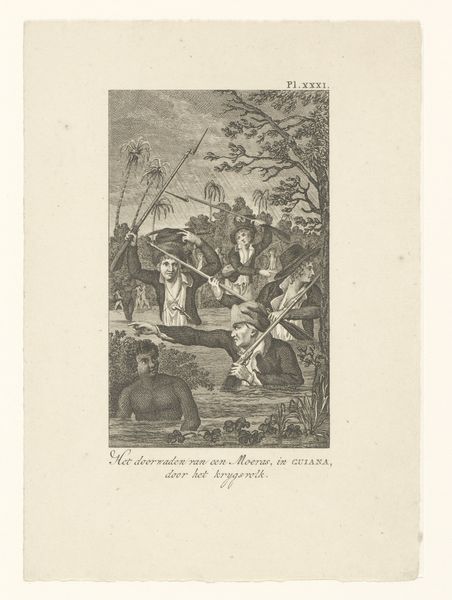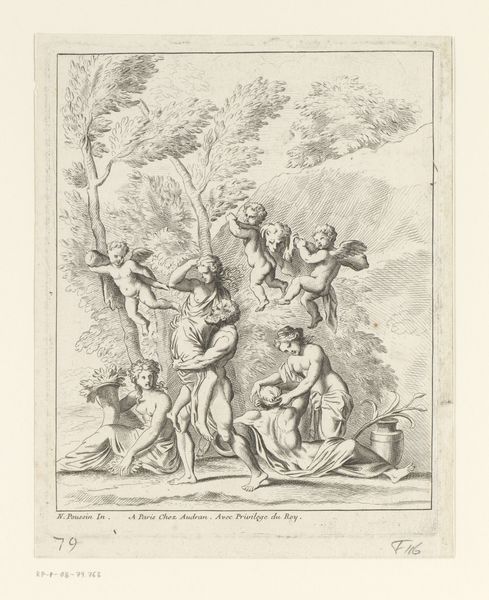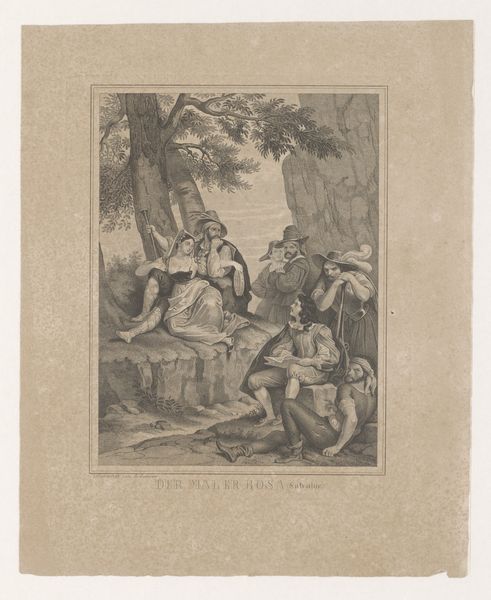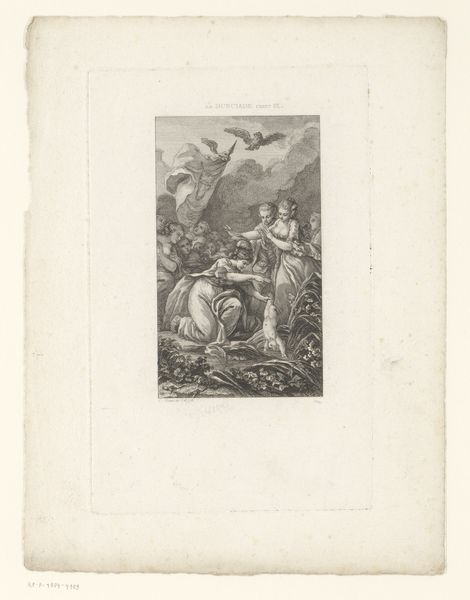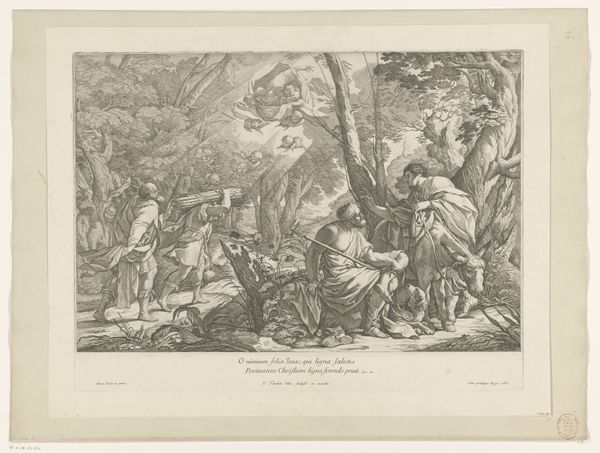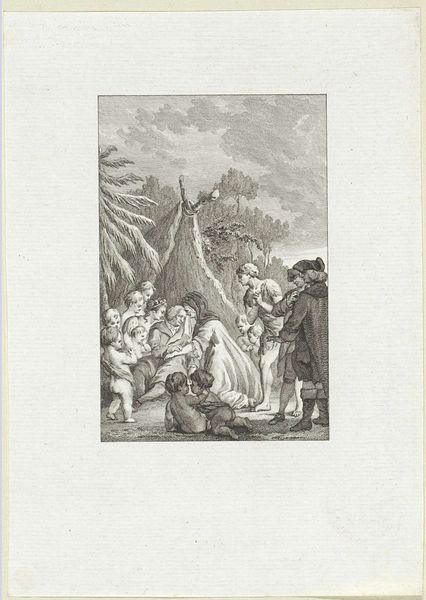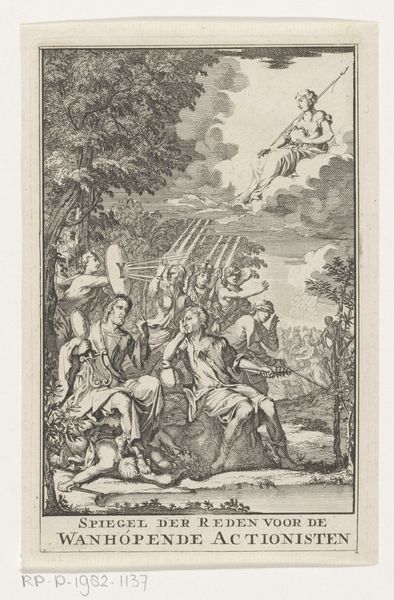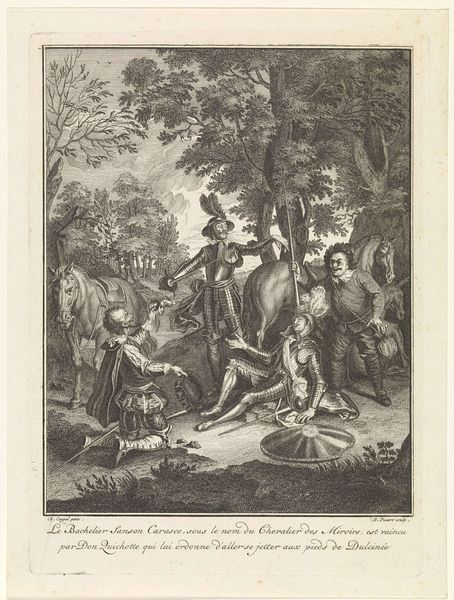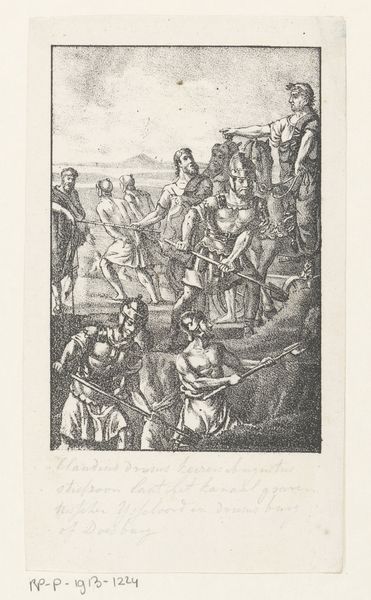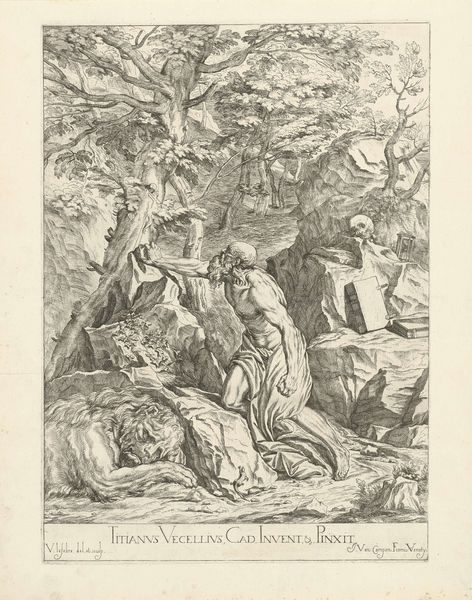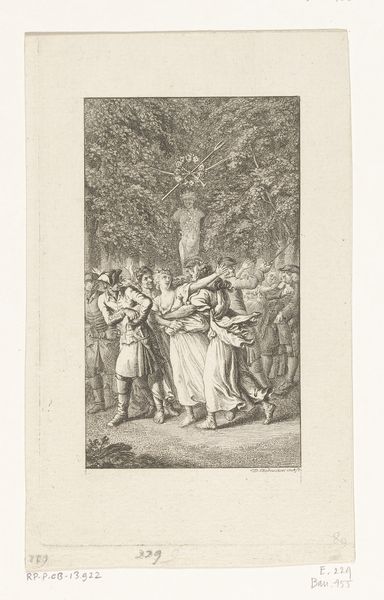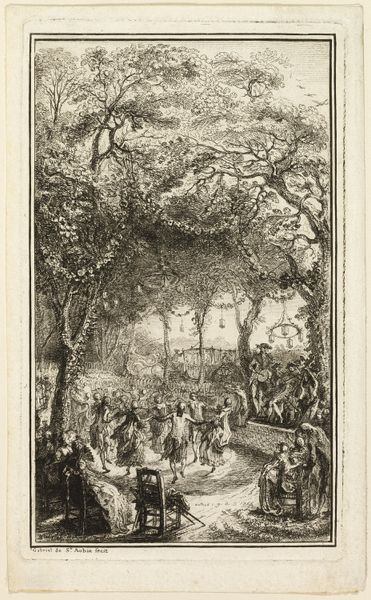
Telemachus verklaart de wetten van Minos aan de Kretenzers 1755
0:00
0:00
drawing, print, intaglio, engraving
#
drawing
#
aged paper
#
narrative-art
#
baroque
# print
#
intaglio
#
old engraving style
#
figuration
#
line
#
history-painting
#
engraving
Dimensions: height 171 mm, width 91 mm
Copyright: Rijks Museum: Open Domain
Jacques Philippe Le Bas created this engraving, "Telemachus Explains the Laws of Minos to the Cretans," in the 18th century. Dominating the scene are the tablets inscribed with laws, symbols of order, and civilization, held aloft, reminiscent of Moses receiving the Ten Commandments. This act of bestowing laws is a recurring motif throughout history. Consider how Hammurabi is depicted receiving his code, or even Prometheus, who, though not a law-giver, delivers the gift of fire—knowledge—to humanity. The tablets signify a divine or divinely-inspired authority. Yet, here, Telemachus, a mortal, interprets them, suggesting a shift towards human reason. The emotional weight of law, order, and justice engages viewers on a subconscious level; it’s a deeply embedded cultural desire for a fair society. This symbol has seen many resurgences, evolving in meaning from divine decree to human interpretation, reflecting our cyclical quest for justice and societal harmony.
Comments
No comments
Be the first to comment and join the conversation on the ultimate creative platform.
